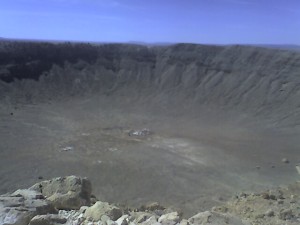It has been a rainy morning today. I had about 1 3/4 inches of rain in my rain gauge this morning. I realize that many people might think that statement almost bereft of any important meaning. Those who are not engaged in Agriculture, do not have a garden, and have no yard to mow, may very well find rain nothing but an inconvenience or even a hated problem. We’re going back to the basics for this post.
Farm ponds and creeks are very important water sources for plants and animals. They are also great for fishing and playing! I have spent Many an hour fishing in farm ponds and enjoyed many a meal of bluegill and bass that I caught and cleaned myself. A historic drought in the early 1950’s was the incentive for many ponds being built across Southwest Missouri. Most of the elm trees on my boyhood farm were cut down so the cattle could eat the leaves since there was no grass. Ponds don’t help the pasture that much but they at least are places for livestock to drink.
Livestock drinking brings up another aspect of water availability. Winter cold means that water sources can freeze over unless it is a sufficiently large creek or other moving body of water. Cows and calves can’t break the ice by themselves if it is thick. I remember many times taking an old axe out to the pond and chopping through the ice to create a hole where the cattle could get a drink of water. That is cold, wet, hard work. There has to be Enough water underneath that ice for the cattle to get a drink. That is one place where that 1 3/4 inches of rain I got today becomes VERY important.
Rain is very important to Agriculture. Water availability may very well be THE MOST IMPORTANT factor across all of Agriculture. Crops need rain, livestock need water. Animals depend on crops to eat that depend on water to grow. Water is the basis for cleaning pretty well everything relating to farm production. The biologic nature of Agriculture means that everything has a time limit. Everything either goes bad after a certain amount of time (think of rot, mold, and decay), or starts off bad as in manure, contaminants like ag chemicals, and waste animal parts in meat processing.
I grew up on a dairy farm where the equipment had to be carefully cleaned and dis-infected after every milking twice a day every day. Think about how quickly milk goes bad when left out. My brother had a gallon of milk spill in his car once and it stank that car up for the rest of its life! Water is the basis for cleaning in almost every part of life. Guess what? Animals poop! (Poop is such a silly sounding word. It makes 6 year olds out of everybody. I always want to giggle when I hear “poop….. poop, poop, poop”.) Manure is a much more civilized term. Milk cows produce manure and they really don’t care where they let it fly. You haven’t lived until you have had a cow swish a manure filled tail around while you are attaching the milker and it wraps around the back of your head and slaps you in the face and mouth! Take my dad’s word for it! Milk barns have to be cleaned of all that manure during and after every milking. Manure is right there at the production point of milk. The two have to be separated. Water is the key.
Water is used for mechanical advantage in processing a lot of produce. Apples, cucumbers, and many other types of fruits and vegetables are examples where sluices are used to convey produce from one place to another without bruising it. The product gets washed and safely moved at the same time. Water is safer, cheaper, easier, and more energy efficient at moving things than belts or rollers.
The next time the weather forecast calls for rain, think about all the benefits that water brings with it. I happen to enjoy water quite a bit. I enjoy drinking it alot. Here is a link to an article discussing the value of water as a vital commodity to be invested in for the 21st century. Just a head’s – up, water availability is going to become very critical to everyone in the next 50 years. That rain may be a nuisance, but you better keep praying for it.



